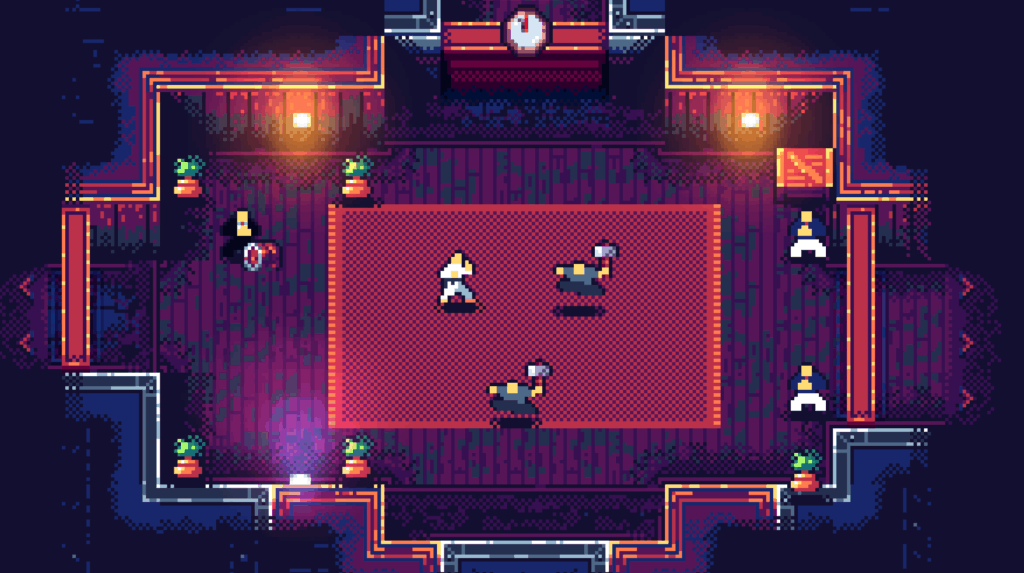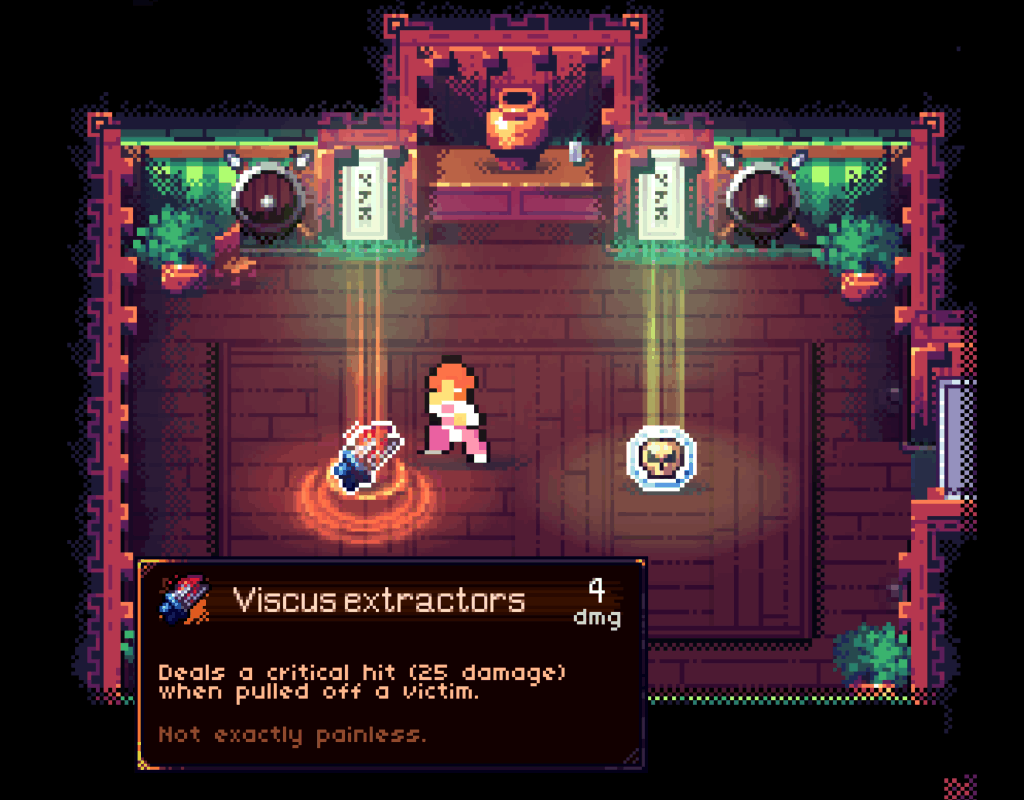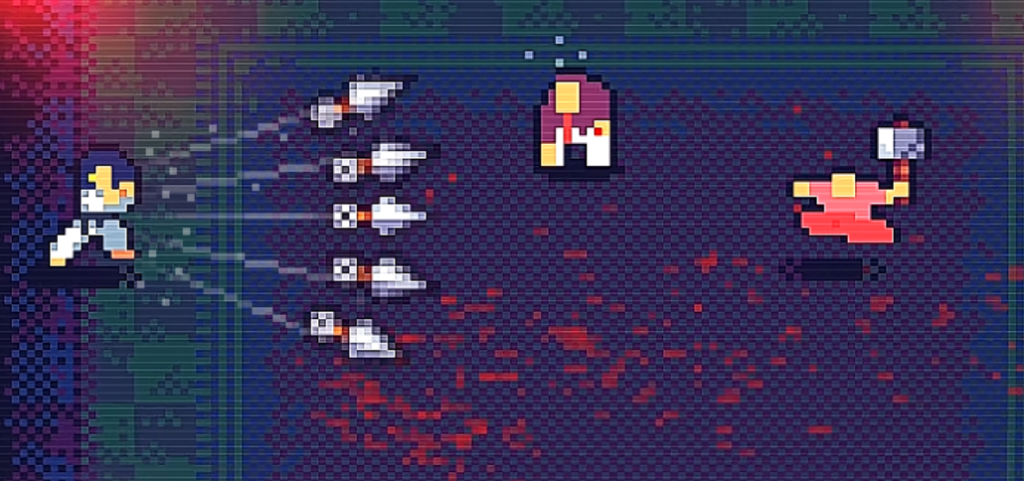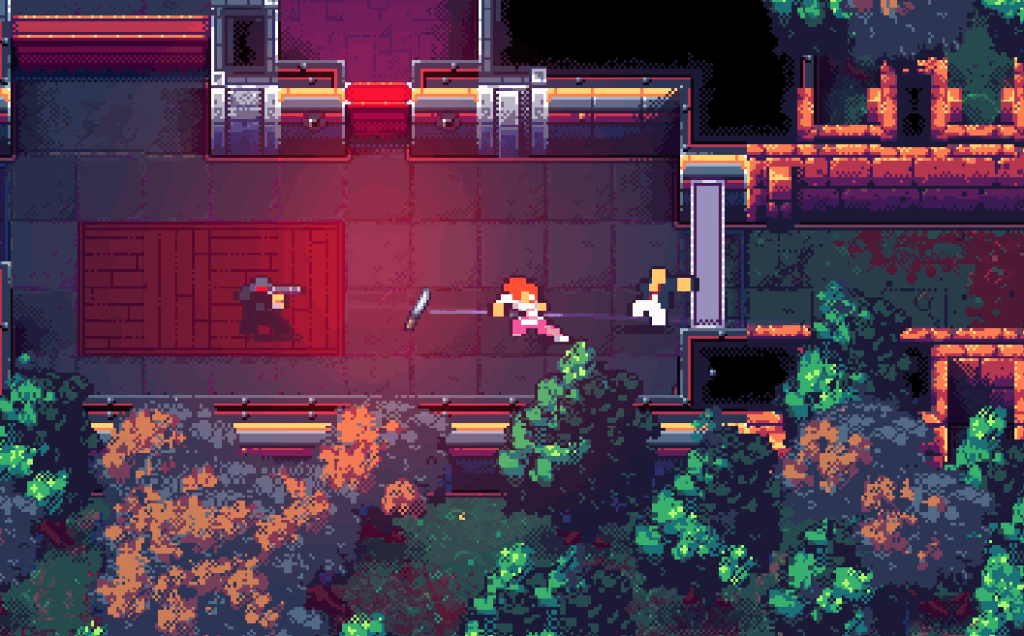The origin story


Tenjutsu is set in a sprawling open Japanese city where you punch and kick your way through gangs in any order. But it wasn’t always like that. It began life as a small, focused brawler. An extended version of my 48-hour Ludum Dare game.
In that first version, you had to hit enemies until their stamina was depleted. But unlike most games, this didn’t kill them or knock them down. Instead, you had to trigger a special finishing move that eliminated all depleted enemies in one go.
The mechanic was pretty fun, mainly because it came with a scoring system. The more enemies you took out in a single Finishing Move, the bigger your reward. It was way riskier than taking them out one by one, because depleted enemies kept fighting until you finished them. So going for the all-at-once kill meant you were surrounded by a bunch of angry and still-dangerous thugs.
A little kunai

The problem with the concept at that time was that it only really worked because of the score/reward system. It felt a bit artificial. It pushed you into chasing the perfect run, like stealth games that reward the flawless ghost approach. It made other playstyles feel less satisfying.
The direct consequence was that I found it difficult to add variety or new levels to that original game. The reason was obvious: its combat design was too narrow. The game basically only had one way to play it right, and therefore, the recipe for good level design was kind of repetitive.
Then, at some point, I had an idea – What if I added a special, powerful weapon that you could only use from time to time? Basically, my plan was to insert random opportunities during combat to add variety in players’ approach.
Enter the Kunai! A simple throwing blade that could one-shot any enemy, but was only usable once per level. It worked pretty well, as players had a new free Joker card to use in all levels to take down the most annoying enemy easily.
That tiny addition blew the doors wide open. A Pandora’s box for me, if you will.
Adding that tiny new weapon led me to the kind-of expected slippery slope. Maybe I should add more items? Like, different weapons that affect gameplay significantly. Oh, and maybe these weapons could drop randomly to make each playthrough a bit different? You can probably guess where that led.
After Dead Cells, I promised myself I wouldn’t make another rogue.
Yet here I was, again.
Going rogue

This new version started with three core concepts taken from that initial experiments, some of which I also learned during my time working on Dead Cells. I knew they were crucial for creating something memorable.
- Embrace Variety – Each weapon should feel unique and play differently.
- Master the Feel – The game should feel great, controls must be tight, and it should never be the game’s fault. If you die, that’s because you miscalculated some risk.
- One vs Many – The thrill comes from being outnumbered. Battles should pit you against overwhelming odds, forcing you to outthink, outmaneuver, and outfight the swarm.
That was it. The plan was in place. All I needed now was to push the legacy of Dead Cells forward. How could its current combat design be developed into something new? Easy, right?
Obviously, it wasn’t that simple. But we’ll go down that rabbit hole next time.
A link to the past

I thought it would be nice to share how the pre-rogue version of Tenjutsu actually played. Please keep in mind that the game is now veeeery different from these old prototypes, but they definitely paved the way for the current gameplay:
- Pre-rogue version (Web version) : the last Finisher-based gameplay with a linear level design. After that one, Tenjutsu became an open world-ish roguelite.
- Original game jam version (Web version): made in 48h, this build is the one that made me wish to make another action game.
If the final product feels anything like the prototype, this will be my new favorite game! You are an inspiration and I am happy to have stumbled onto your website today… there are lots of useful tools and tidbits all over the place here :)
First of all, thanks a lot for this devlog, and for sharing another playable version . It’s rare to see a dev open up like this, and it honestly makes following Tenjutsu feel even more special.
Personally, I discovered Dead Cells back in 2018/2019, and from that moment I was hooked. I spent hours watching behind-the-scenes and making-of videos from Motion Twin, so seeing you share the evolution of Tenjutsu like this really brings me back to that feeling. It’s genuinely exciting, and I really hope this game goes very, very far .
I know you said you don’t really want to hear the word “rogue” anymore , but I’m curious — do you see Tenjutsu as something that will stay more lightweight (like Nuclear Blaze), or do you plan to make it more ambitious, with additional content (if that ever happens, I secretly hope it’s a collab with Katana Zero ), and systems? Or maybe that’s something you’d rather leave to the community/fans later on?
Also, I had a question about the tools. Are you still building Tenjutsu on Gamebase? And do you ever think about merging Gamebase with LDtk into a single open-source engine/editor that people could contribute to? I feel like it could become something really powerful yet lightweight, especially for folks who don’t code much.
Anyway, thanks again for sharing your work so openly. Can’t wait to see where you take this project .
Can't help but think about how this relates to Dead Cells going from tower defense to roguelike.
I guess realizing you're heading in the wrong direction and steering the wheel is the real genius here.
Can you add some clues about the timing? How much time between the legacy game dev and the Kunai? And then how long before the random drops idea came in?
Right, that's very similar to the decision we took for Dead Cells! Never an easy change, as you really feel that you're diving into the rabbit hole with no idea how deep it goes.
The beat 'em up version took about 3-4 months, and as soon the Kunai was introduced, the change to a rogue took about 2-3 months. It was mostly about re-implementing more "advanced" ways to manage weapon damage, buffs etc. The fact I already did that before helped in great ways!